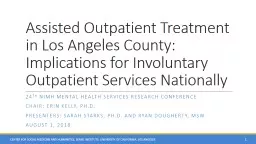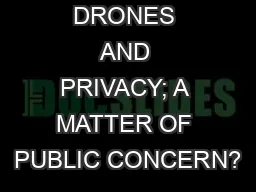PPT-Assisted Outpatient Treatment in Los Angeles County: Implications for Involuntary Outpatient
Author : tatiana-dople | Published Date : 2019-06-29
24 th NIMH Mental Health Services Research Conference Chair Erin Kelly PhD Presenters Sarah Starks PhD and Ryan dougherty MSW August 1 2018 Center for Social
Presentation Embed Code
Download Presentation
Download Presentation The PPT/PDF document "Assisted Outpatient Treatment in Los Ang..." is the property of its rightful owner. Permission is granted to download and print the materials on this website for personal, non-commercial use only, and to display it on your personal computer provided you do not modify the materials and that you retain all copyright notices contained in the materials. By downloading content from our website, you accept the terms of this agreement.
Assisted Outpatient Treatment in Los Angeles County: Implications for Involuntary Outpatient: Transcript
Download Rules Of Document
"Assisted Outpatient Treatment in Los Angeles County: Implications for Involuntary Outpatient"The content belongs to its owner. You may download and print it for personal use, without modification, and keep all copyright notices. By downloading, you agree to these terms.
Related Documents














